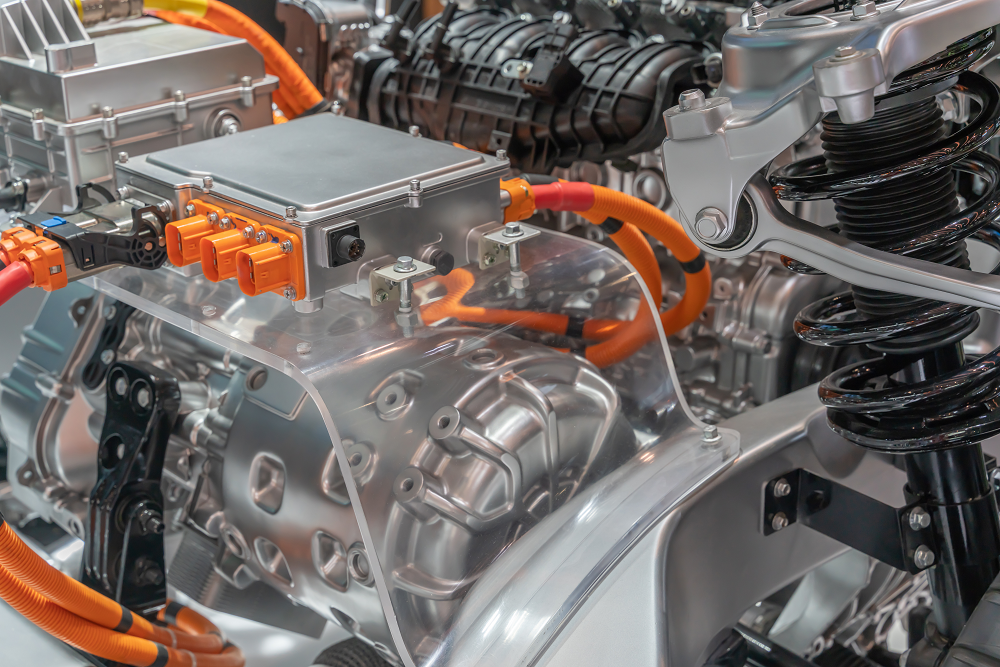Technological advancements are constantly driving progress in the manufacturing industry, and it’s not just limited to machinery. With every new product, Master Fluid Solutions® pushes the envelope of what’s possible with metalworking fluids, while metallurgists are improving the capabilities of the materials we use to build our world. New product categories, like advanced high-strength steels (AHSS), have redefined durability while minimizing weight.
One of the biggest drivers of change in material capabilities has been the automotive industry. In fact, their need to improve fuel efficiency is behind the growing popularity of AHSS. As consumer demands shift production increasingly to electric vehicles (EVs), manufacturers across the entire value chain must find ways to incorporate advanced metals such as lightweight alloys, carbon fibers, AHSS and beyond into their operations while maintaining profitability.
The Metals That Define Electric Vehicle Manufacturing
Electric vehicle sales are booming, and expected to continue growing. Globally, EV sales rose an astonishing 65% in 2018 for a total of 2.1 million vehicles. As battery technology improves and infrastructure for charging stations becomes more widely accessible, a study by Bloomberg New Energy Finance predicts the coming waves of electric vehicles will have price parity with conventional fuel-consuming automobiles. And to achieve net zero goals by the year 2050, at least 60% of all car sales will have to be for electric vehicles as soon as 2030.
The metals most needed for this expansion into a fully electric vehicle fleet are copper, nickel, and lithium. As a result, demand for nickel is expected to increase 14x by the year 2030. Similarly, demand for lithium and copper are expected to grow 9 to 10x.
Advanced EV Metals Need Advanced Cutting Fluids
As manufacturers incorporate more lithium, nickel, copper, other advanced metals and composites into their operations, choice in cutting fluid will become increasingly important to avoid waste and maximize throughput.
Currently, these metals are compatible with several TRIM cutting fluids, but to maximize productivity and tool life, manufacturers should consult with their fluid provider. As metallurgists find new ways to produce these materials to compensate for their low availability, or improve their energy-retention capabilities for longer battery life, it will be important for manufacturers to use high performance metalworking fluids that prevent material waste.
TRIM® C390 has proven to be a versatile option for many manufacturers, compatible with both traditional steels and advanced metals used in EV vehicles and batteries. The long sump life reduces supply costs from less frequent change outs and lower maintenance requirements. This also translates to better labor efficiency and improves productivity from reduced downtime. As prices for lithium, nickel, and copper increase due to growing demand, stabilizing other areas of your budget will be key to maintaining profitability.
With so much attention from consumers on green supply chains, many automakers will expect their suppliers to have more eco-friendly and sustainable operations. Cutting edge fluids like TRIM® HyperSol™ 888NXT take the lubrication and cooling capabilities of other TRIM fluids even further and are formulated with biobased ingredients instead of petroleum. Manufacturers who use this in their operations can maximize the value of high-quality cutting fluids while setting themselves apart from competitors by producing more sustainable products.
As advanced metals become increasingly prevalent in manufacturing, the best way to derive maximum value from them is to machine them with the most advanced cutting fluids. To learn more, call +1 800-537-3365 or email us at [email protected].

